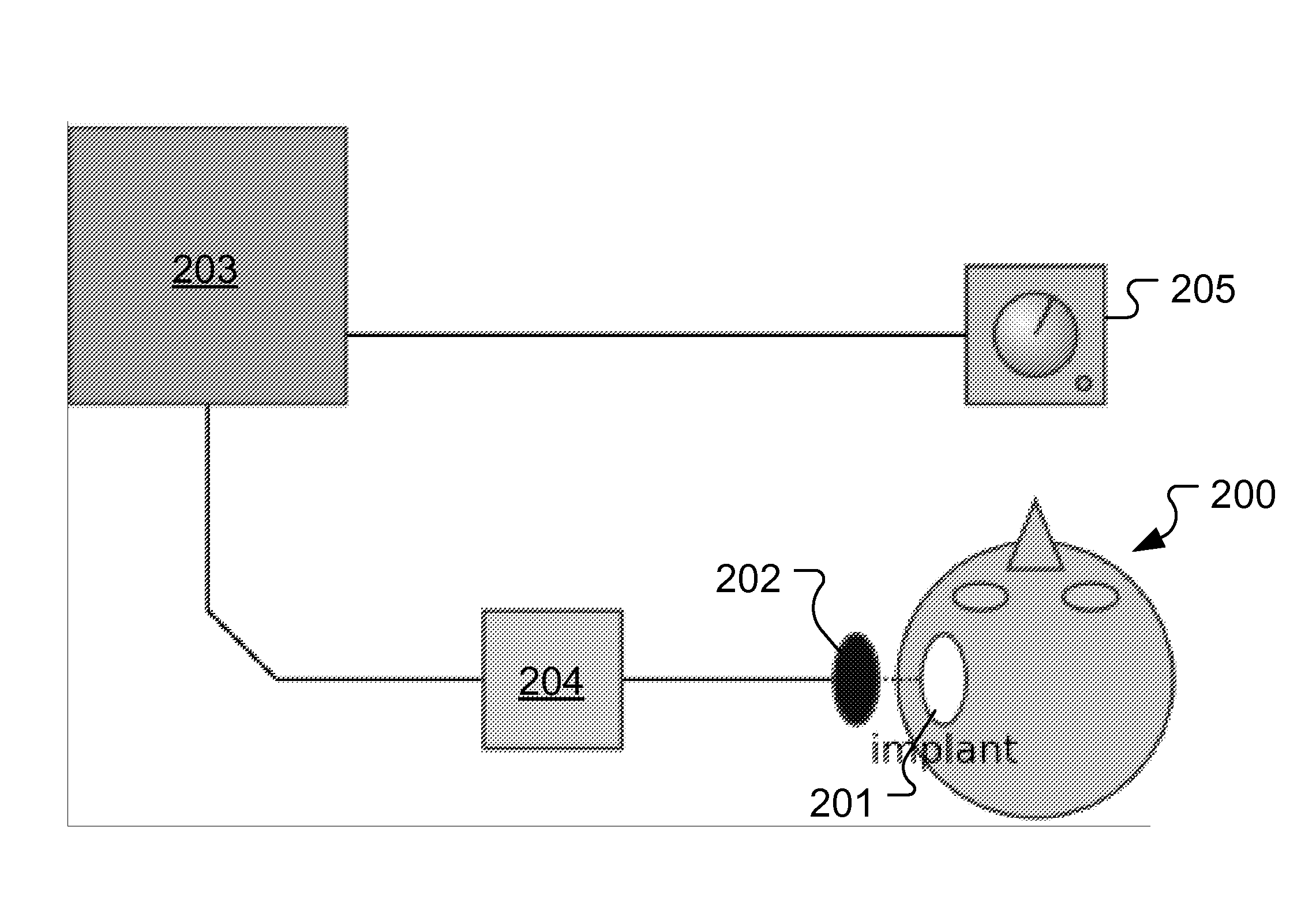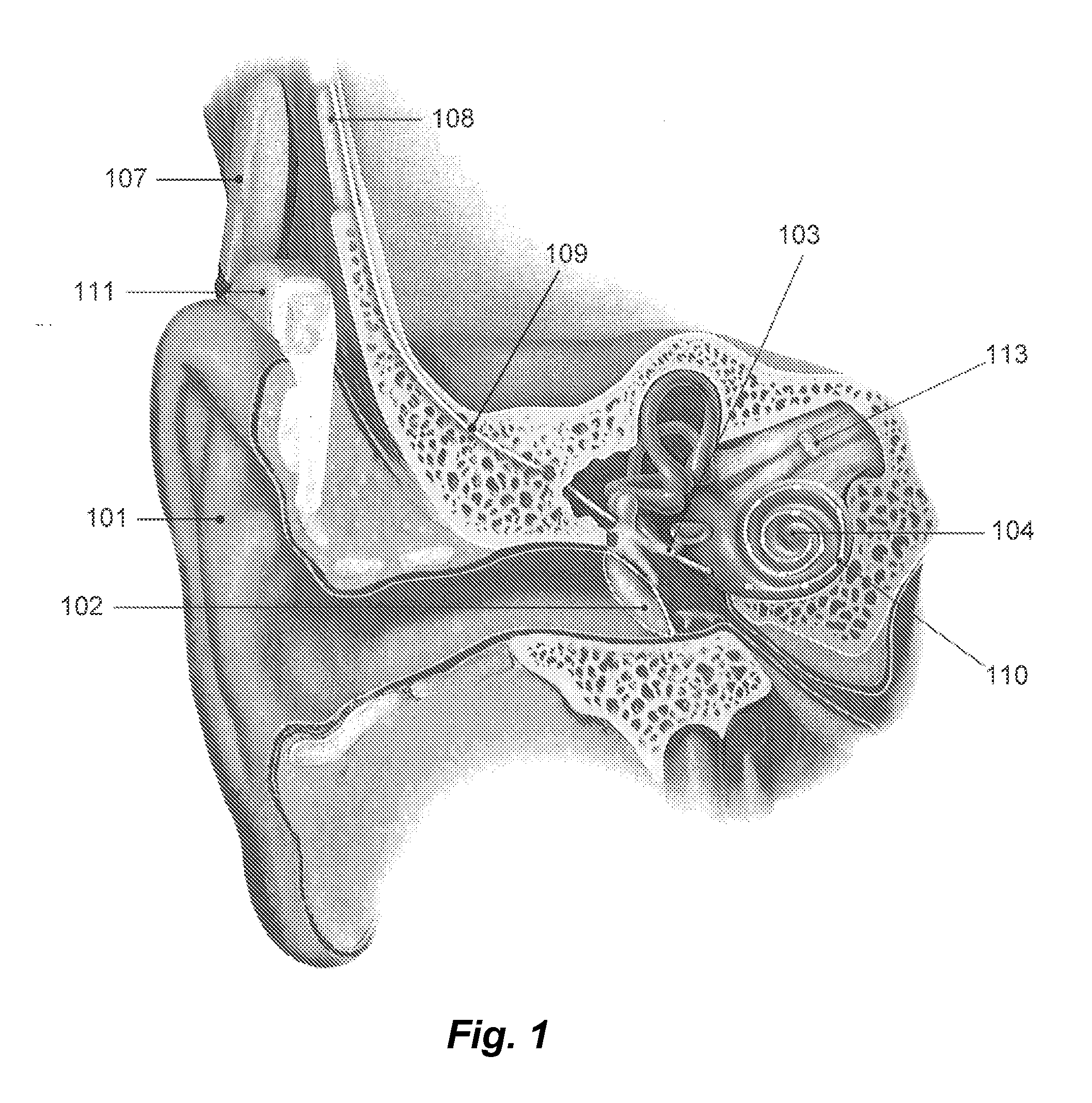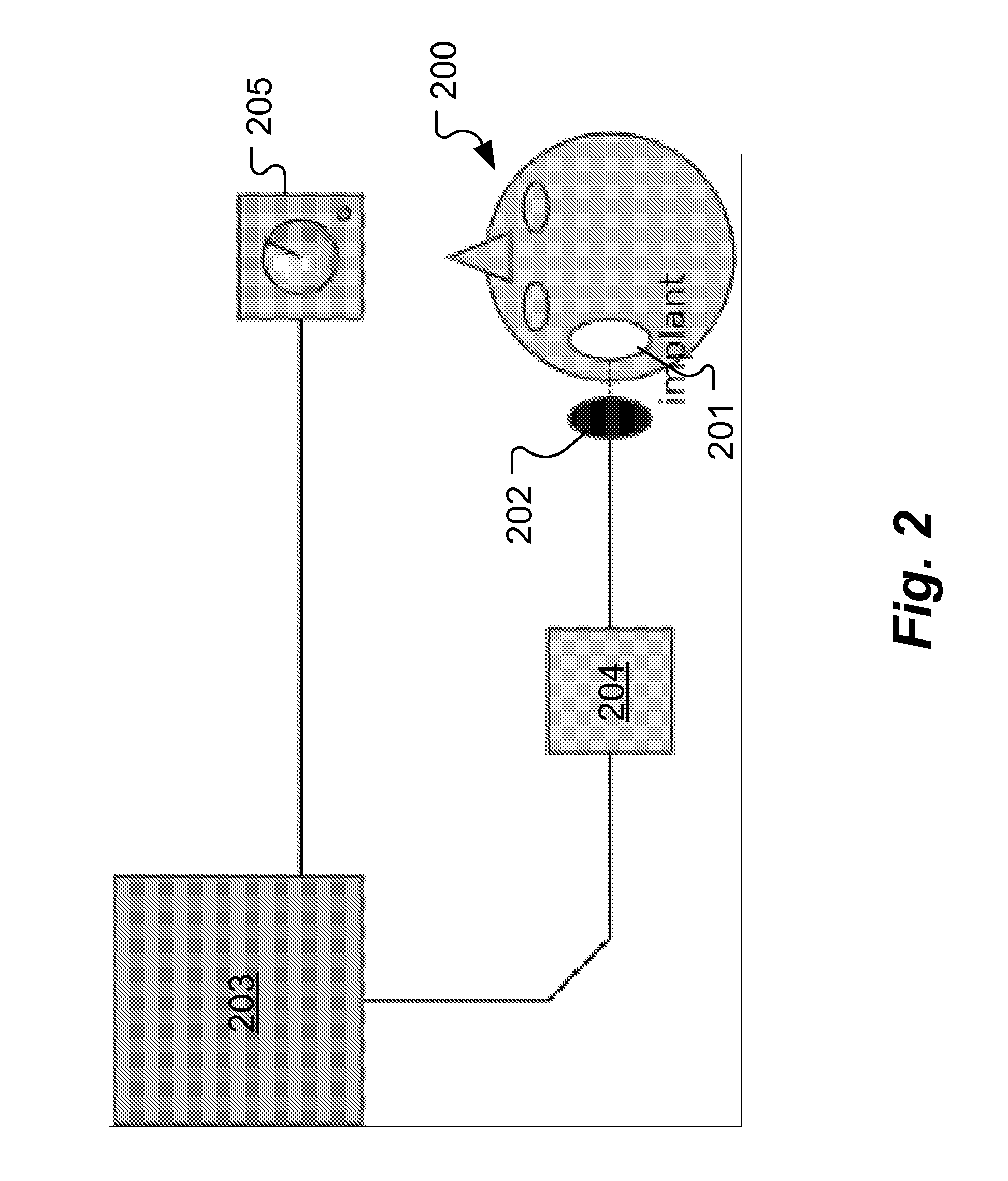Method For Fitting A Cochlear Implant With Patient Feedback
- Summary
- Abstract
- Description
- Claims
- Application Information
AI Technical Summary
Benefits of technology
Problems solved by technology
Method used
Image
Examples
Embodiment Construction
[0037]Various embodiments of the present invention are directed to improved techniques for a dynamic fit adjustment of an audio prosthesis for a given patient user. In the following discussion the system operating parameters will be referred to as p1, p2, . . . , pN. Each of the operating parameters can be discrete or continuous with optional bottom and top boundaries. Let si(p1, . . . , pN) be a subjective operating parameter judgment value that measures the “music enjoyment.” There are many such possible subjective judgment values such as: s2=“pop music enjoyment”, s3=“speech understanding in quiet”, s4=“quality and clearness of speech”, etc. The objective of the fitting process is to maximize s1 (or any other sX function). If s1 were a known mathematical formula, then this problem would be a (probably nonlinear) fitting problem for which mathematical methods exist. See, e.g., Levenberg Marquardt Algorithm as described in Marquardt, D. W., An algorithm for Least-Square Estimation ...
PUM
 Login to View More
Login to View More Abstract
Description
Claims
Application Information
 Login to View More
Login to View More - R&D
- Intellectual Property
- Life Sciences
- Materials
- Tech Scout
- Unparalleled Data Quality
- Higher Quality Content
- 60% Fewer Hallucinations
Browse by: Latest US Patents, China's latest patents, Technical Efficacy Thesaurus, Application Domain, Technology Topic, Popular Technical Reports.
© 2025 PatSnap. All rights reserved.Legal|Privacy policy|Modern Slavery Act Transparency Statement|Sitemap|About US| Contact US: help@patsnap.com



